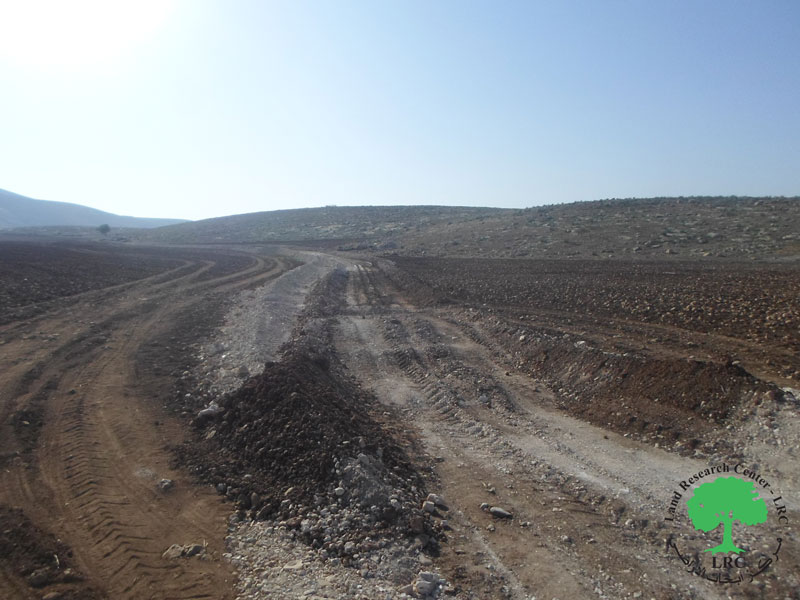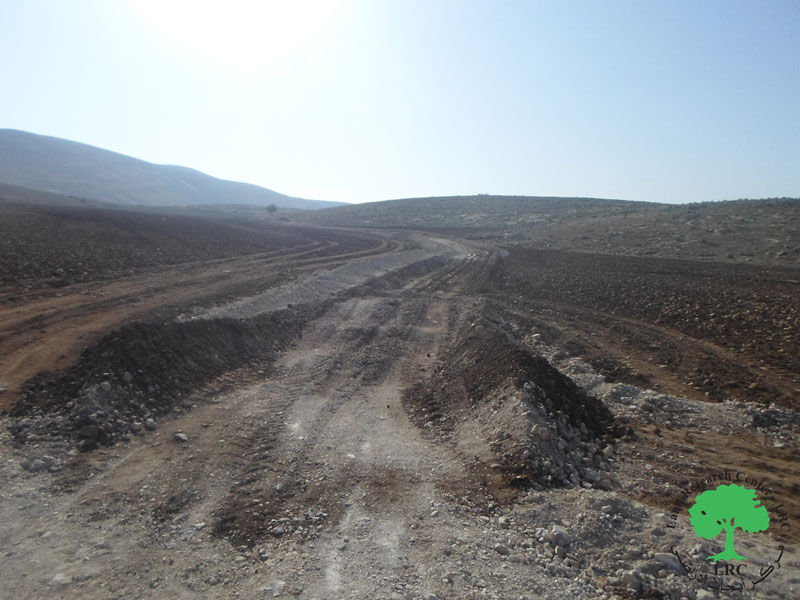2021-08-16
Destroying an Agricultural Road in ‘Atouf plains/ Tubas Governorate
Violation: Destroying an agricultural road.
Location: Al-Buqa’ia plains area east ‘Atouf village / Tubas Governorate.
Date: August 16th 2021.
Perpetrators: The building inspector at the Israeli Civil Administration.
Victims: A number of farmers.
Description:
Monday, August 16th 2021, A massive army force accompanied by the building inspector at the Israeli Civil Administration ravaged an agricultural road in ‘Atouf plain east Tubas.
The targeted road is 3200 m * 6m, recently rehabilitated by the Palestinian Agricultural Development Association, the road provides access to more than 800 dunums planted with vegetables and field crops in Sahel Al-Buqai’a area. Noteworthy, at least 60 farmers use the road regularly.
Scenes of the demolition operation
In April 7th 2021, the Occupation served a halt of work notice targeting the road on the pretext of building without a license , the village council in ‘Atouf village in coordination with Milad office in Tubas Governorate prepared a legal file and submitted it to Israeli relevant departments, but the occupation refused the application. And in July 20th 2021, Occupation extended the objection period but still stood against efforts of Human rights institutions to save the road.
During the past years, the occupation targeted a number of Agricultural roads in Al-Buqa’ia plain. On the other hand, the occupation troops dug two massive trenches to separate the Al-Buqa’ia plain from Beka’ot colony.
Al-Buqa’ia plain under fire:[1]
In the year 2000, the occupation authorities dug a massive trench at Al-Buqa’ia plain to impose control over the area and hinder farmer’s movement and access to the plain, in addition to isolating 40,000 dunums out of 98800 dunums of agricultural lands.
The trench affected farmers movement and access to vast areas of agricultural lands. On the other hand, the occupation forces carry out daily raids to the plains, during which they confiscate agricultural tools and assault farmers, all the mentioned made practicing agriculture a nearly impossible task, and consequently had a devastating impact on the agricultural sector.
[1] GIS-LRC

This Publication has been produced with the assistance of the EU
The Contents of this publication are the sole responsibility of the individual organization only , and can in no way be taken to reflect the views of the EU


